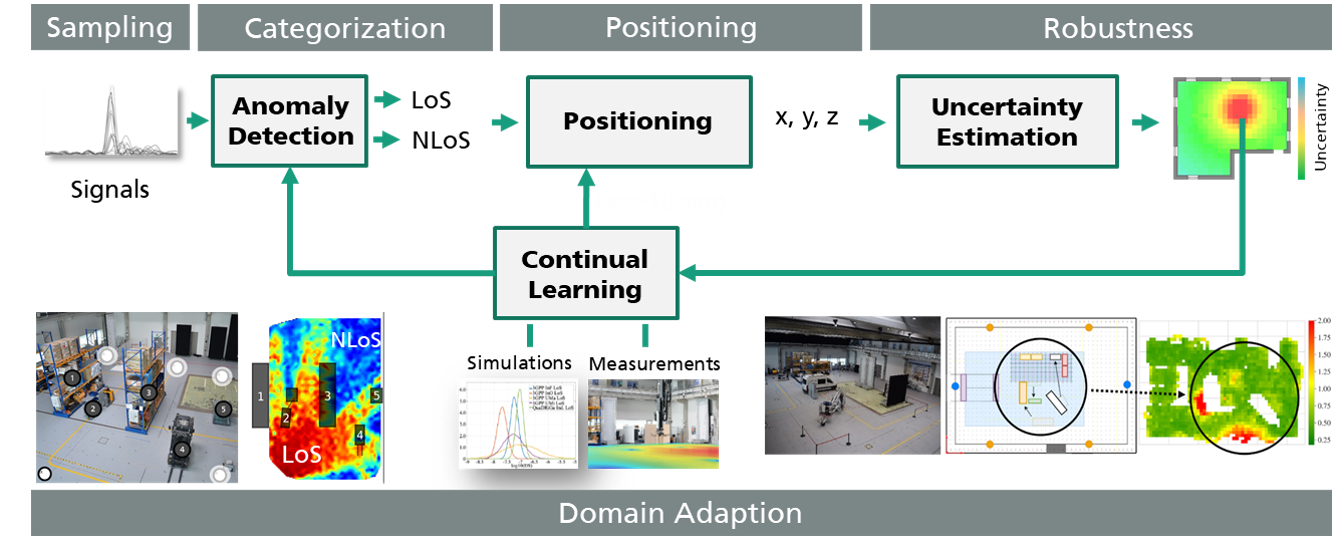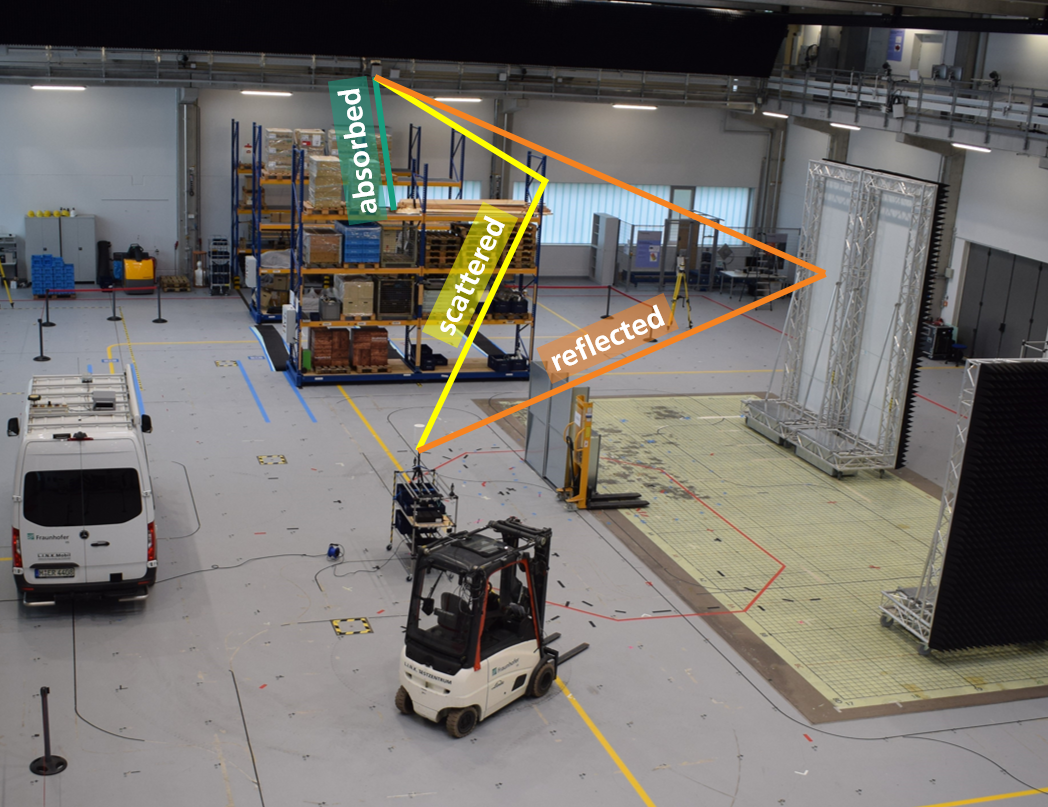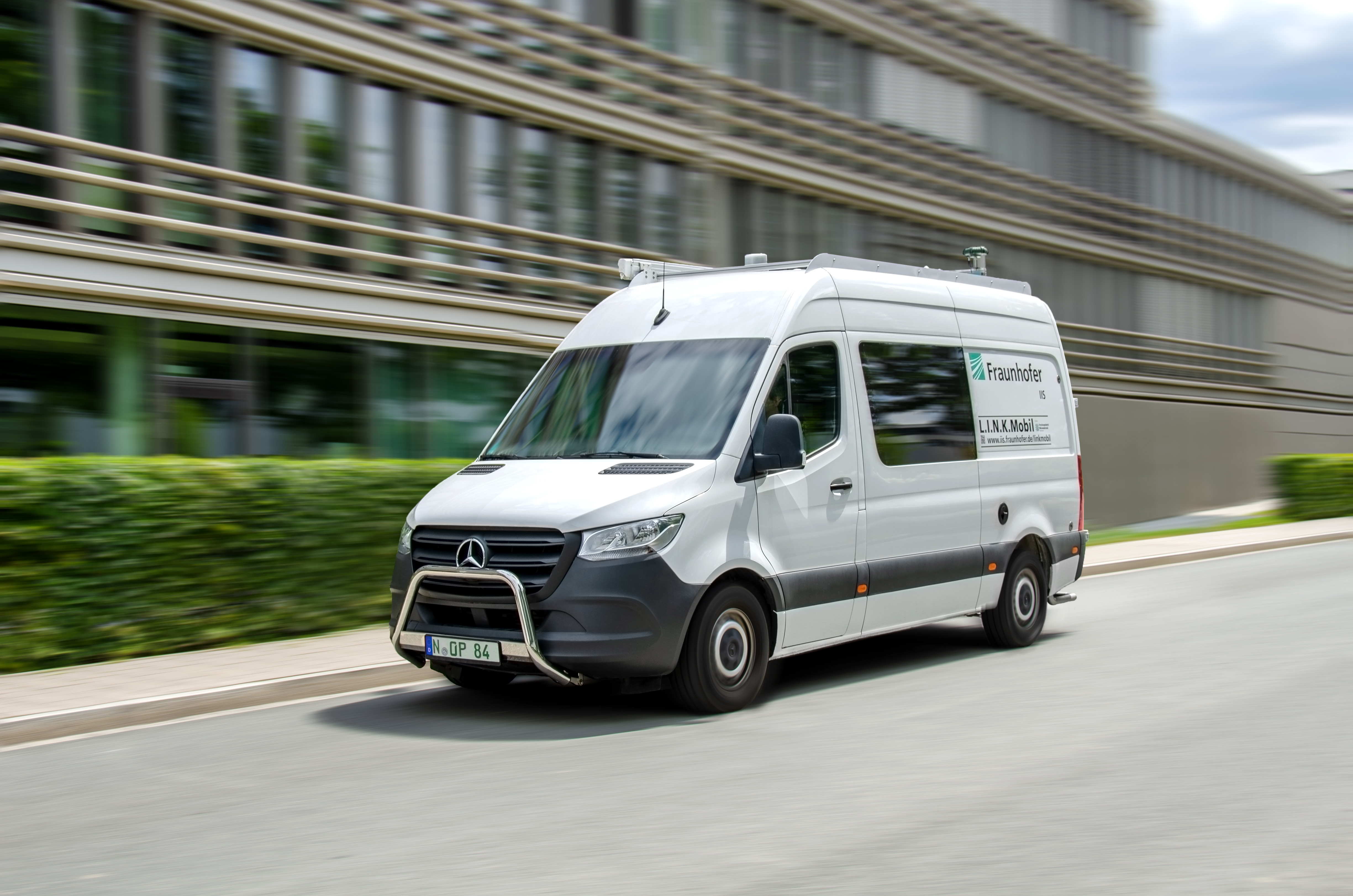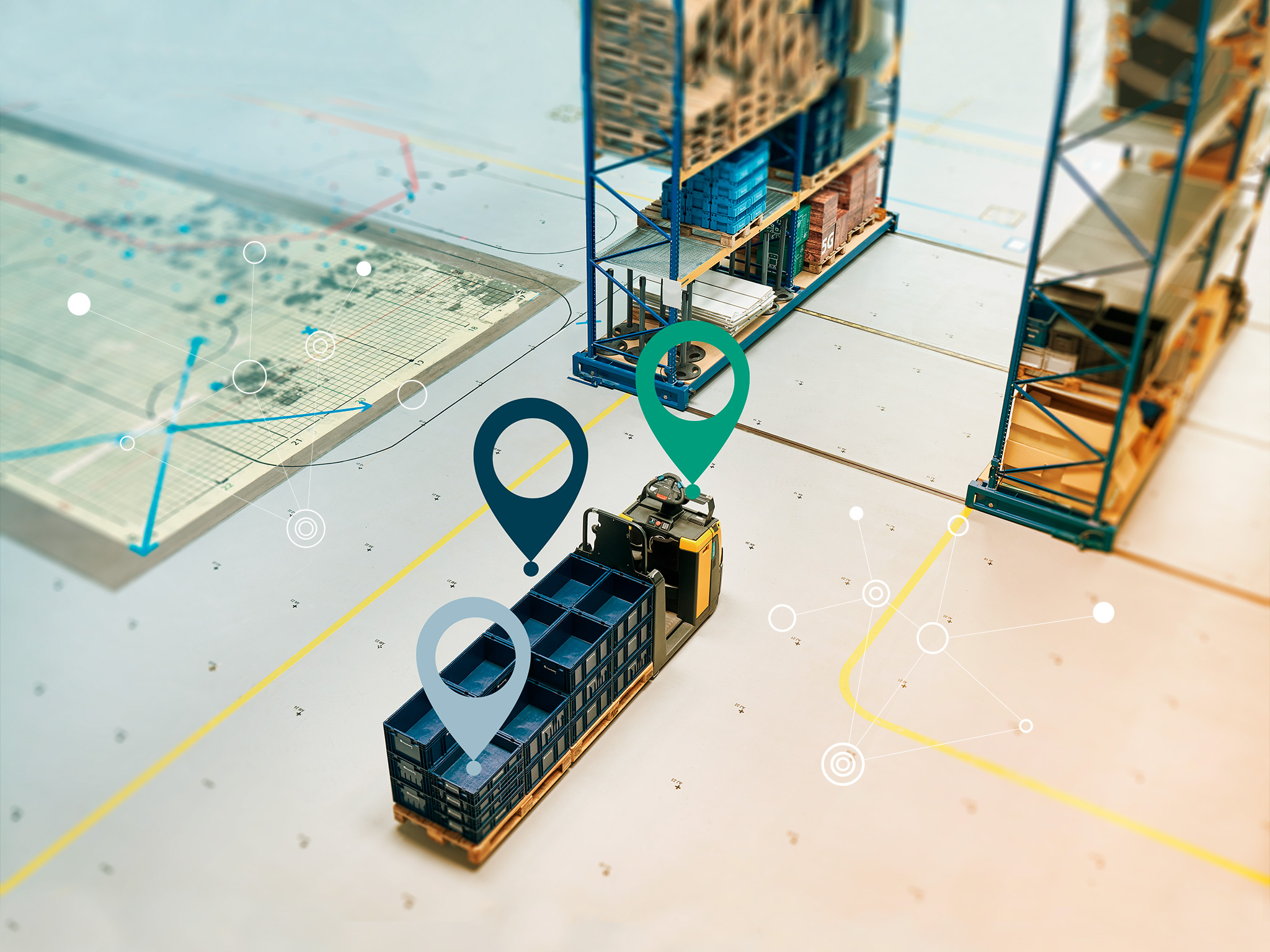5G localization with Uplink TDOA (time difference of arrival) for industrial environments
September 12, 2022 | Interview with Maximilian Kasparek, Andreas Eidloth and Jochen Seitz

What localization accuracies can we already achieve today with 5G localization (Uplink TDOA)?
The Uplink TDOA method uses triangulation for localization. The object to be localized transmits localization messages in its uplink to the base stations. Our emulation platform already achieves an accuracy of less than 50 cm in the horizontal plane in an empty hall.
How will this accuracy change with future 5G releases?
The initial implementation of localization in 5G was part of Release 16. To this end, 3GPP aimed for a horizontal accuracy for commercial use cases of less than 10 meters for 80 percent of positioning events outdoors and examined the feasibility of this. Indoors, the goal is an accuracy of less than 3 meters. In Release 17, this target mark – for both of indoors and outdoors – has been cut to 1 meter for 90 percent of positioning events. At this point in time, there’s no way to tell how well this target is adhered in practice.
Can the localization algorithm that has been developed also be used in public networks?
If a 5G localization solution is available, it can in principle be deployed in both campus networks and public networks. However, localization using the Uplink TDOA method requires highly accurate time synchronization between base stations, which is easier to implement in campus networks than in public networks. In the latter, it would be necessary to use time distribution by means of GNSS.
When will 5G localization be available on the market?
Any answer to this question is going to be on the vague side, as we’re talking about bringing together the localization functionality distributed across UE (user equipment), RAN (radio access network) and 5G core. That means it will probably take some time before the product is available on a large scale.
Interview with Jochen Seitz

How easy is it to implement 5G localization (Uplink TDOA) for industrial environments?
With the rollout of 5G and the allocation of private spectrum in the 3.7–3.8 GHz range, the demand for localization in non-public 5G networks or campus networks is increasing. Many devices are already capable of localization with Uplink TDOA in principle, since the standardized procedures and signals have been implemented. However, the necessary components for receiving and processing signals in campus networks are still under development.
What kind of customers are interested in the 5G localization offers of Fraunhofer IIS?
5G localization is of particular interest to customers who are considering or already planning their own 5G campus network. Many of the inquiries we receive about this are from the manufacturing and logistics sectors. We support customers in identifying, elaborating, evaluating and pre-testing use cases for 5G localization through investigations in our test beds or, in the future, on-site at the customer’s premises. This allows us first to support our customers’ decision-making process and then to accompany customers along the path to setting up their own sustainable systems.
What kinds of collaborations are possible with Fraunhofer in the field of 5G localization?
For more than 20 years, Fraunhofer IIS has been researching, developing and testing localization technologies. Based on our many years of experience from research and development projects, especially in the field of radio positioning and wireless communications, as well as our involvement in standardization, we offer a wide range of consulting services around customized localization solutions with 5G. In addition to consulting, of course, we are happy to research and develop 5G localization solutions as part of direct orders or in publicly funded projects.
When can we expect future updates on the topic of AI, and what innovations are possible with it?
In the global research community for localization systems, AI is already a core topic for the further development of existing methods and the realization of new ones. I think that with the implementation of new releases in products, we should soon see updates that make use of AI, as the necessary computing power is usually either already available in the systems or can be expanded. We are also already testing our own approaches to 5G localization with uplink signals to get the achievable accuracy available even in areas where propagation effects such as shadowing, reflection and scattering make localization based on TDOA methods very difficult or even impossible. This is particularly important within complex production and logistics environments for precise and wide-ranging localization.
What developments and tests have already been carried out with industry?
These are very diverse due to the numerous research and industrial projects that have been completed or are ongoing. On the topic of 5G localization, we primarily advise industrial customers, develop and test system components with or for equipment suppliers, and actively work together with associations on standardization. Many applications relate to the areas of production and logistics. Applications here include, for example, the monitoring and control of driverless transport systems (AGVs, UAVs), the digitalization of material flow and warehouse management, and even the Industrial Internet of Things (IIoT). However, there are also application projects in rescue services for the localization of rescue workers at the scene of an emergency or for the use of drones and autonomous vehicles for better situation assessment.


Privacy warning
With the click on the play button an external video from www.youtube.com is loaded and started. Your data is possible transferred and stored to third party. Do not start the video if you disagree. Find more about the youtube privacy statement under the following link: https://policies.google.com/privacy5G localization with Uplink TDOA (time difference of arrival) for industrial environments
